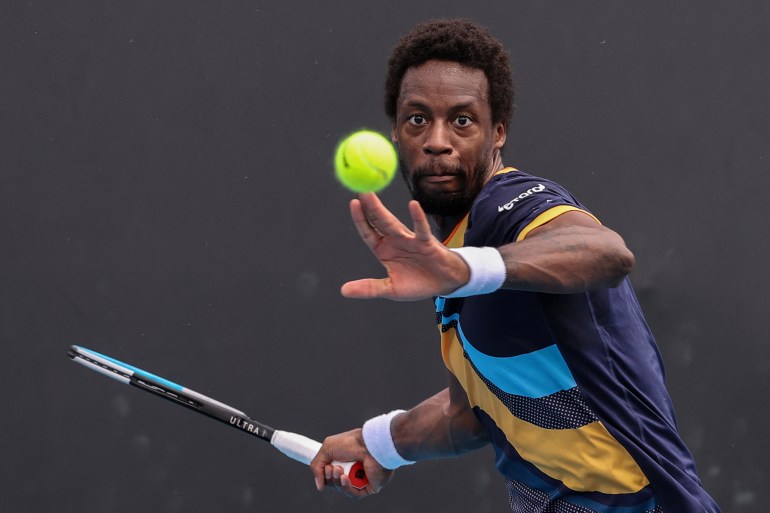Australian Open finally gets under way amid COVID restrictions
First Grand Slam of the year starts amid heightened precautions and limited spectators.

The Australian Open – tennis’s first Grand Slam of the year delayed until February – has finally begun, albeit with a limit on the number of spectators present courtside as authorities battle to contain the spread of the coronavirus.
A smaller crowd than usual was present on the opening day on Monday.
Keep reading
list of 3 itemsMapping coronavirus anti-lockdown protests around the world
The coronavirus vaccine divide: In maps and charts
Form and fitness are highly unpredictable at the Australian Open after the coronavirus wiped out five months of last season and badly disrupted preparations for the first Grand Slam of 2021.
The Australian Open was postponed to allow players to quarantine and play warm-up events, which were suspended for a day last week after a coronavirus case at a tournament hotel.
Monday’s total attendance was 17,922 – a far cry from a year ago, when 64,387 came through the turnstiles on day one.
It’s the fourth Grand Slam tournament affected by the coronavirus after last year’s Wimbledon was cancelled, the French Open was postponed and the US Open was held behind closed doors.
On the court
Defending champion Novak Djokovic said he played “flawless and dominant tennis” as he cruised past Frenchman Jeremy Chardy.
The Serbian world number one, who clinched his 17th Grand Slam in last year’s gripping Melbourne final against Dominic Thiem, wasted little energy in the 6-3, 6-1, 6-2 romp in just 91 minutes on Rod Laver Arena.

Serena Williams, Naomi Osaka and Simona Halep also enjoyed convincing wins as the tournament finally got under way after a troubled build-up.
In the men’s draw, US Open champion Dominic Thiem was made to work hard in the first set by Kazakh veteran Mikhail Kukushkin before coming through 7-6 (7/2), 6-2, 6-3.
Gael Monfils, the French 10th seed, was stunned 3-6, 6-4, 7-5, 3-6, 6-3 by Emil Ruusuvuori of Finland, the world number 86, in three hours and 46 minutes.

Quarantine an obstacle to athletes’ performance
Meanwhile, Frenchman Benoit Paire criticised organisers for their “shameful” treatment of players during quarantine before the tournament, saying a lack of training due to strict restrictions contributed to his first-round exit.
World number 29 Paire, who lost 2-6 6-2 6-7(5/7) 5-7 to Egor Gerasimov, was one of 72 players who were unable to leave their rooms to train during quarantine after passengers on their flights to Melbourne tested positive for COVID-19.
A few top-ranked players, including Djokovic and Thiem, had self-isolated in Adelaide ahead of an exhibition event and were allowed to train five hours a day.
“I think it’s s***, and what happened is shameful,” Paire told French media on Monday. “I’m very happy with my level … but this tournament, I think it’s really crap. There was also a positive case on the flight to Adelaide, but there, they had time to take blood samples. We were told to quarantine.
“Either we do the same things and the same rules for everyone. I do not understand why it’s not fair for everyone … This match, I could have won it if I had had one or two more training sessions, a normal preparation.”
Electric line calls, a welcome addition
One area where the coronavirus’s effect on the sport has not been disputed is the introduction of electric line technology, with human judges replaced by ball-tracking cameras to reduce the number of people on-site at Melbourne Park.
Williams and Osaka were among the players to give their seal of approval as the electronic system made its Grand Slam debut.
The cameras are set up along each line and automatically announce their decisions in real-time, with a recorded human voice calling “out”, “fault” and “foot fault”.
The electronic calls feature pre-recorded voices of Australia’s front-line workers in the country’s pandemic response such as firefighters and other emergency response personnel.